Planning for the Unforeseen: The Importance of Having a Structural Drying Plan in Every Home
In the quiet of our daily lives, the last thing most homeowners anticipate is the chaos brought on by unexpected water intrusion. Whether it’s from a flash flood, a burst pipe, or a leaking roof, water can invade our homes, causing not just immediate stress but potentially long-lasting damage to the very structures we rely on for safety and comfort. The speed at which water can transform from a life-giving resource to a destructive force is startling, highlighting the need for preparedness even in seemingly calm and controlled domestic environments. This necessity brings us to the focal point of our discussion: the importance of having a structural drying plan in place for every home. Such a plan is not merely a precautionary measure; it’s a critical component of home maintenance and disaster readiness that can significantly mitigate the impact of water damage. By understanding the risks associated with water intrusion and the benefits of immediate and professional response, homeowners can safeguard their property, health, and peace of mind against the unexpected. Through this blog, we’ll delve into why every homeowner should equip themselves with knowledge and strategies for structural drying, ensuring that when the unforeseen occurs, they’re not just reacting, but proactively managing the situation with confidence and efficiency.
The Risks of Water Damage
Water damage in homes can arise from a myriad of sources, each carrying the potential to inflict significant harm on a building’s structure and the well-being of its inhabitants. These sources range from natural disasters, such as hurricanes and flash floods, which can engulf homes in water within moments, to household mishaps like burst pipes, leaky roofs, or overflowing appliances. Regardless of the origin, the consequences of water intrusion share a common thread of urgency and severity.
The escalation of water damage follows a distressingly swift timeline. Within the first 24 to 48 hours post-intrusion, water can seep into the hidden crevices of a home, soaking into walls, floors, and furniture. This immediate absorption sets the stage for more complex problems, as damp environments are perfect breeding grounds for mold and mildew. Not only do these fungi pose significant health risks, especially to those with respiratory issues, but they can also cause unpleasant odors and structural deterioration over time.
Moreover, the structural integrity of a home is at stake when water damage is not promptly and effectively addressed. Wooden support structures can warp, swell, or even rot, compromising the safety of the entire building. Electrical systems, if exposed to water, can short circuit, leading to potential fire hazards and costly repairs. Metal components might rust, and insulation could become saturated, reducing its effectiveness and necessitating replacement.
The hidden costs of water damage extend beyond the immediate clean-up and restoration efforts. The long-term impacts on a home’s value, insurability, and livability can be profound. Additionally, the emotional toll on families, who may lose irreplaceable personal belongings and face the stress of displacement and restoration work, cannot be underestimated.
Understanding the risks associated with water damage underscores the necessity of preventative measures and preparedness. A structural drying plan becomes not just a recommended precaution but an essential strategy in protecting a home from the potentially devastating effects of water intrusion.
Understanding Structural Drying
At its core, structural drying is the science and art of removing excess moisture from the materials that comprise the structure of a home, as well as from the air inside it. This process is crucial following any kind of water intrusion, as it helps to mitigate the damage and restore the property to its pre-loss condition. Structural drying is not merely about dealing with the immediate presence of water; it’s a comprehensive approach to preventing the long-term consequences of moisture, such as mold growth, structural damage, and the degradation of indoor air quality.
The structural drying process typically begins with a thorough assessment of the affected area. This includes identifying the sources of moisture, the types of materials impacted, and the extent of the water penetration. Based on this assessment, professionals deploy a combination of techniques and equipment designed to extract water efficiently and promote rapid drying. These tools may include powerful extractors to remove standing water, air movers to facilitate evaporation, and dehumidifiers to pull moisture from the air. In more advanced cases, specialized equipment like infrared cameras and hygrometers are used to detect hidden moisture and monitor the drying process.
The principles guiding effective structural drying are grounded in the science of psychrometrics, which involves the dynamics of air and moisture. By manipulating temperature, airflow, and humidity within an environment, drying professionals can create optimal conditions for evaporation and moisture removal. This careful balance is crucial, as too rapid drying can cause materials like wood to crack or warp, while too slow drying can encourage mold growth and further damage.
A key aspect of structural drying is its focus on not just removing visible water but also addressing the moisture absorbed into materials. This includes “bound” moisture, which is more difficult to extract and requires targeted strategies to remove. The goal is to bring the environment and its materials back to an acceptable level of dryness, known as the “dry standard,” which is determined based on the normal moisture content of materials in the unaffected areas of the home.
Understanding the intricacies of structural drying is essential for homeowners, as it highlights the importance of professional intervention in the aftermath of water damage. While some aspects of water removal can be tackled with DIY approaches, the comprehensive drying process is complex and requires specialized knowledge and equipment. Recognizing the need for and benefits of professional structural drying helps homeowners make informed decisions when faced with water damage, ensuring the longevity and safety of their homes.
The Benefits of Having a Structural Drying Plan
Quick Response Time: The first few hours after water damage occurs are critical. With a structural drying plan in place, homeowners can initiate the drying process immediately, significantly reducing the window in which water can cause further damage. This swift action is vital for limiting the absorption of water into walls, flooring, and furnishings, which in turn helps in controlling the spread of moisture-related issues like mold and mildew.
Minimizing Damage: An effective structural drying plan encompasses not only the removal of standing water but also the prevention of secondary damage. By employing a targeted approach to dry out the structure and contents of the home efficiently, the extent of the damage can be significantly minimized, saving homeowners from potentially extensive repairs and replacements.
Health and Safety: Water damage can quickly lead to the growth of mold and bacteria, which pose serious health risks, especially to individuals with allergies or respiratory conditions. A proactive structural drying plan aids in swiftly addressing these concerns, maintaining a healthy indoor environment and safeguarding the occupants’ well-being.
Elements of an Effective Structural Drying Plan
Creating a robust structural drying plan involves several critical steps:
- Risk Assessment: Identifying areas in your home that are most vulnerable to water damage and understanding the potential sources can help in crafting a tailored response strategy.
- Professional Partnership: Selecting a reputable water damage restoration and structural drying company in advance ensures you have expert help on call. Look for certified professionals with a track record of success.
- Emergency Contact List: Having a list of contacts, including the chosen restoration company, insurance agent, and local emergency services, can expedite the response when time is of the essence.
- Preventive Measures: Incorporate measures such as regular inspections of plumbing and roofing, installing water sensors, and understanding how to shut off your home’s water supply to mitigate risks.
Case Studies: Success Stories of Pre-Planned Structural Drying
In the realm of home maintenance, the tale of one homeowner stands as a testament to the power of preparation and the undeniable value of a structural drying plan. This individual had faced the silent menace of water damage previously, a slow leak within the walls that remained hidden until the tell-tale signs of mold began to emerge. The ordeal that followed was both costly and distressing, involving extensive repairs and a lengthy battle with mold remediation. It was a wake-up call that led them to seek the expertise of a structural drying professional.
Determined to prevent a recurrence, the homeowner worked closely with the specialist to devise a comprehensive structural drying plan tailored to their home’s specific needs. This plan included routine checks for potential water ingress points, the installation of water detection devices in key areas prone to leaks, and clear, step-by-step actions to take in the event of water intrusion. Perhaps most critically, it established a direct line to a team of water damage restoration experts, ensuring that professional help would be on its way with a single phone call.
This case not only highlights the effectiveness of having a structural drying plan in place but also showcases the peace of mind it can provide. The homeowner’s proactive measures transformed a potentially disastrous situation into a manageable inconvenience, demonstrating that preparation is key to mitigating the impacts of water damage. It stands as a clear message to others: investing in a structural drying plan is not just a safeguard for your property, but a proactive step towards preserving your home’s integrity and your own well-being.
Conclusion
Understanding the importance of structural drying in the aftermath of water damage is critical for every homeowner. It’s not just about dealing with the immediate effects of water intrusion but preventing long-term damage and ensuring the health and safety of your home’s occupants. A structural drying plan is an essential component of this preparedness, offering peace of mind in knowing you’re ready to respond effectively to unexpected water damage.
Now is the time to assess your preparedness for water-related emergencies. Consider your current plan and whether it includes the critical elements of effective structural drying. If not, reach out to professional restoration services to help develop a plan that protects your home and loved ones. Remember, the goal is not just to react to disasters, but to be ready for them, minimizing their impact on your home and life.

